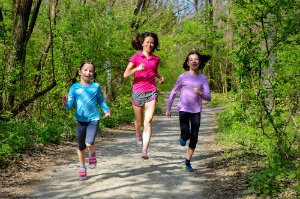Children's Heel Pain
Calcaneal Apophysitis (Sever's Disease)Medical terms can sometimes sound scary to parents. When we tell you your child has calcaneal apophysitis—or even if we use the common term, Sever’s disease—you may wonder if it’s serious and worry about your child’s heel pain. Well, don’t. It is a common condition that causes children’s heel pain, and there are several home remedies you can perform to alleviate it until your child outgrows it.
Breaking Down the Name

When children enter those growth spurt years between 8 and 16 or so, tissues in the foot and leg can grow at different rates. If the heel bone growth plate is expanding more quickly than the Achilles, the two pull against each other, causing inflammation and pain.
This happens more frequently when you have an active child who likes to run and play sports. The increased activity leads to overuse, and there is too much pull between tendon and bone—more than the tissues can stand. That results in pain during activity or if the heel bone is squeezed, limping or the inability to do usual maneuvers on the field, and the habit of walking more on the toes (to relieve the pull at the back of the heel).
The Solution Means Rest—Prevention Means Stretching
Your child may not want to hear this, but they will likely need to cut back or stop completely the activity that is causing this problem—at least for a while. It is the single best way to allow the growth plate and tendon to heal. In very severe cases, this may require us to put a cast or boot on the foot to eliminate motion in the ankle, but this is less common. We may have your child wear a heel support temporarily until the pain has subsided.
While he or she is resting from activity, you can use a cloth-wrapped ice pack to soothe the discomfort and inflammation. Massaging the calf muscles and ankles may be helpful as well. We can also recommend a suitable children’s analgesic to get them over the roughest spots of pain (be sure you don’t give them aspirin!).
Once the pain is gone, your child can gradually return to normal activity, letting pain be the guide against doing too much too soon. This is also when we can start him or her on a stretching regimen to loosen up the Achilles and calf muscles and reduce strain on the growth plate. This will make another episode less likely in the future.
Surgery and invasive treatment are rarely needed for this childhood condition, and as full growth is reached and the bones mature, the problem disappears on its own, leaving no lasting consequences.
Children’s Foot Care in SoCal
From helping with children’s foot deformities like club feet, to dealing with the pain of Sever’s disease, Dr. Nitza Rodriguez, Dr. Robert Spencer and Dr. Han Nguyen are the area experts for children’s foot and ankle issues in the Saddleback Valley. Call our office in Ladera Ranch, CA today at (949) 364-9255 (WALK) to get your child in for an evaluation. We deal with sports injuries all the time, and can help them heal and get back to playing as soon as is safely possible.
You can request an appointment online as well, and while you are there, check us out on Facebook and follow us on twitter. You can learn valuable foot care tips, get inspired, and let us know how we are doing.
Contact Us
Ladera Ranch
333 Corporate Dr. Ste 230, Ladera Ranch, CA 92694
Tel: (949) 364-9255 (WALK)
Fax: (949) 364-9250
Office Hours:
Monday - Friday: 9am - 5pm
*(Lunch 12 noon - 1pm)
Orange
2617 E Chapman Ave. Ste 303, Orange, CA 92869
Tel: (714) 639-7993
Fax: (714) 639-0729
Office Hours:
Monday - Friday: 9am - 5pm
*(Lunch 12 noon - 1pm)
